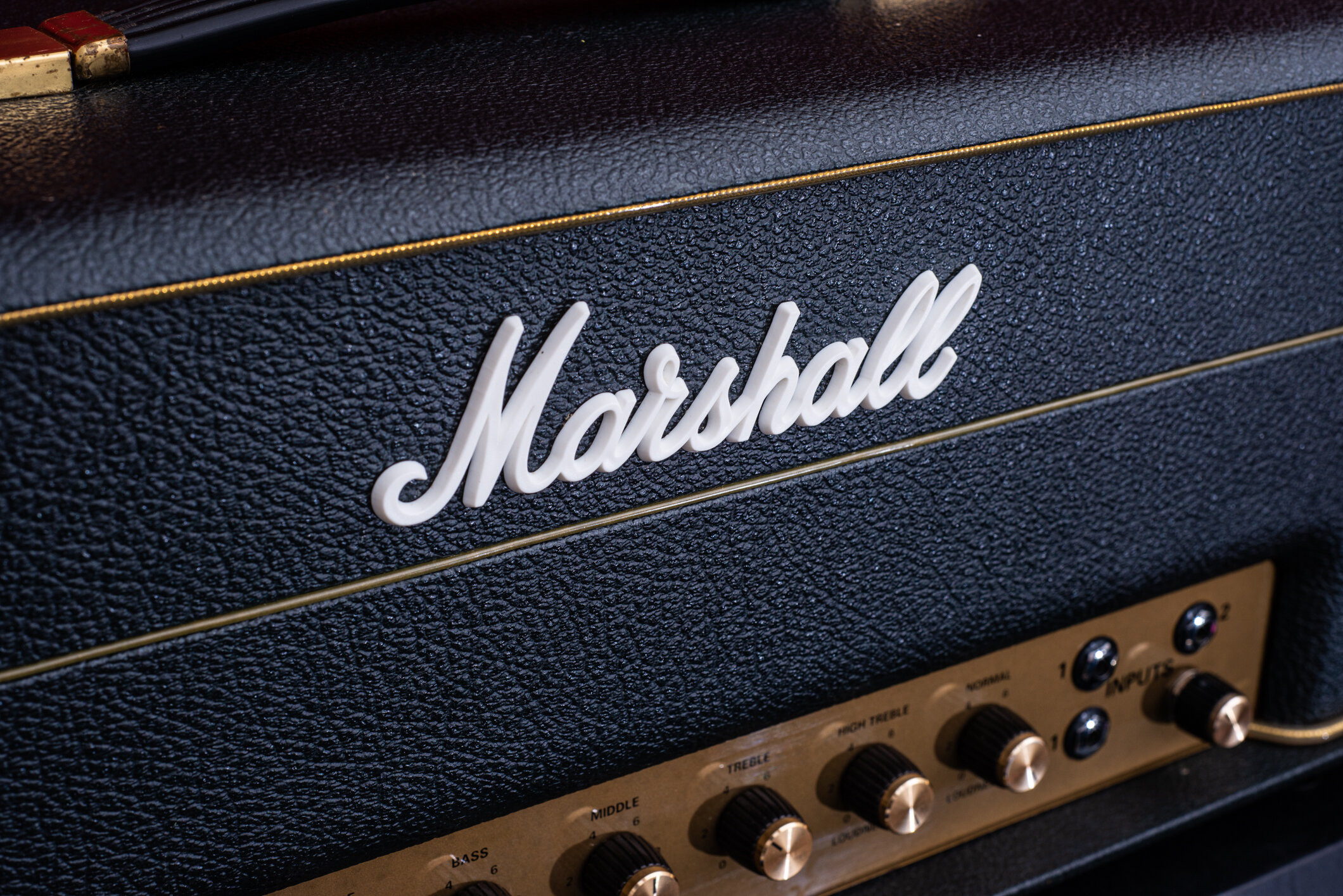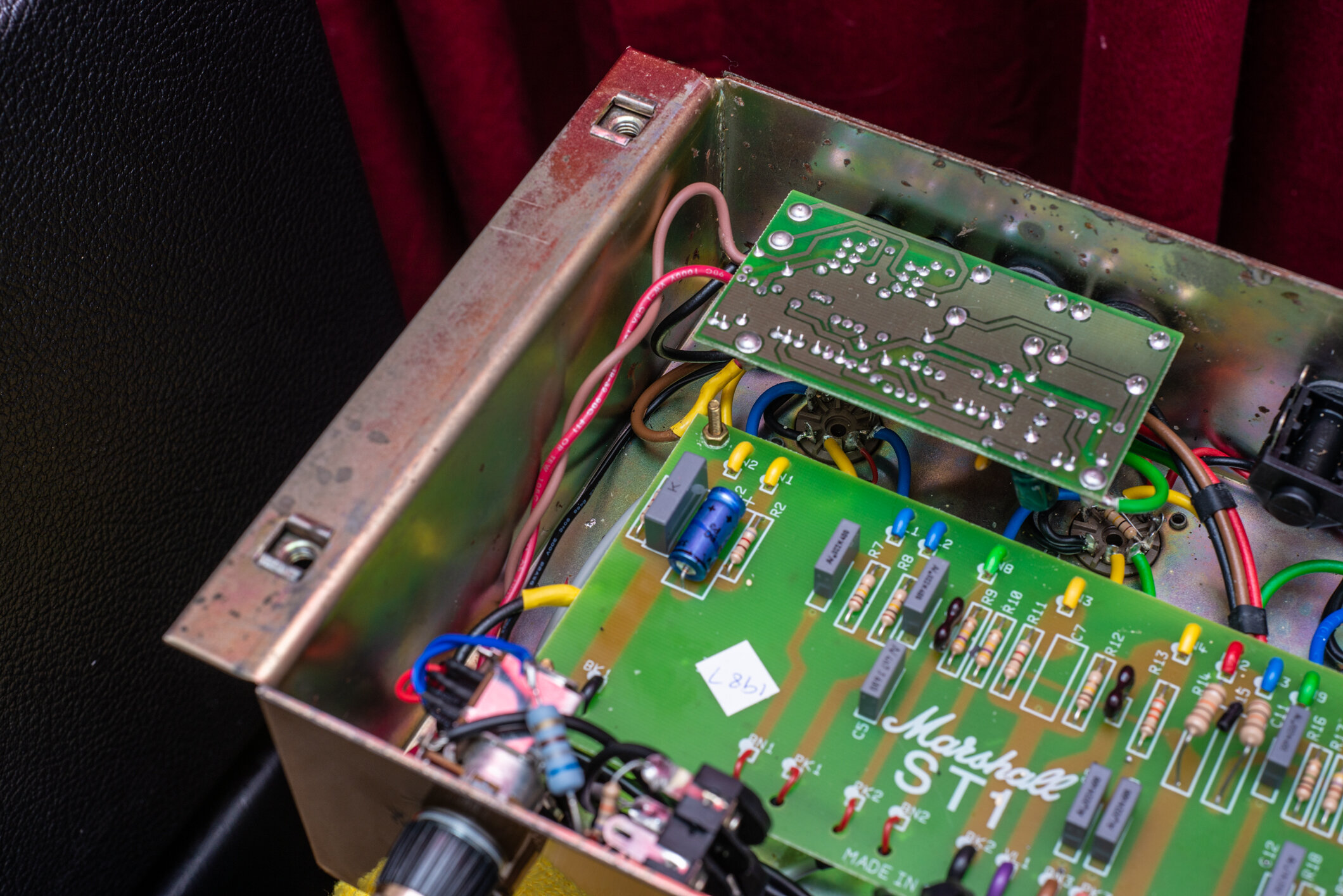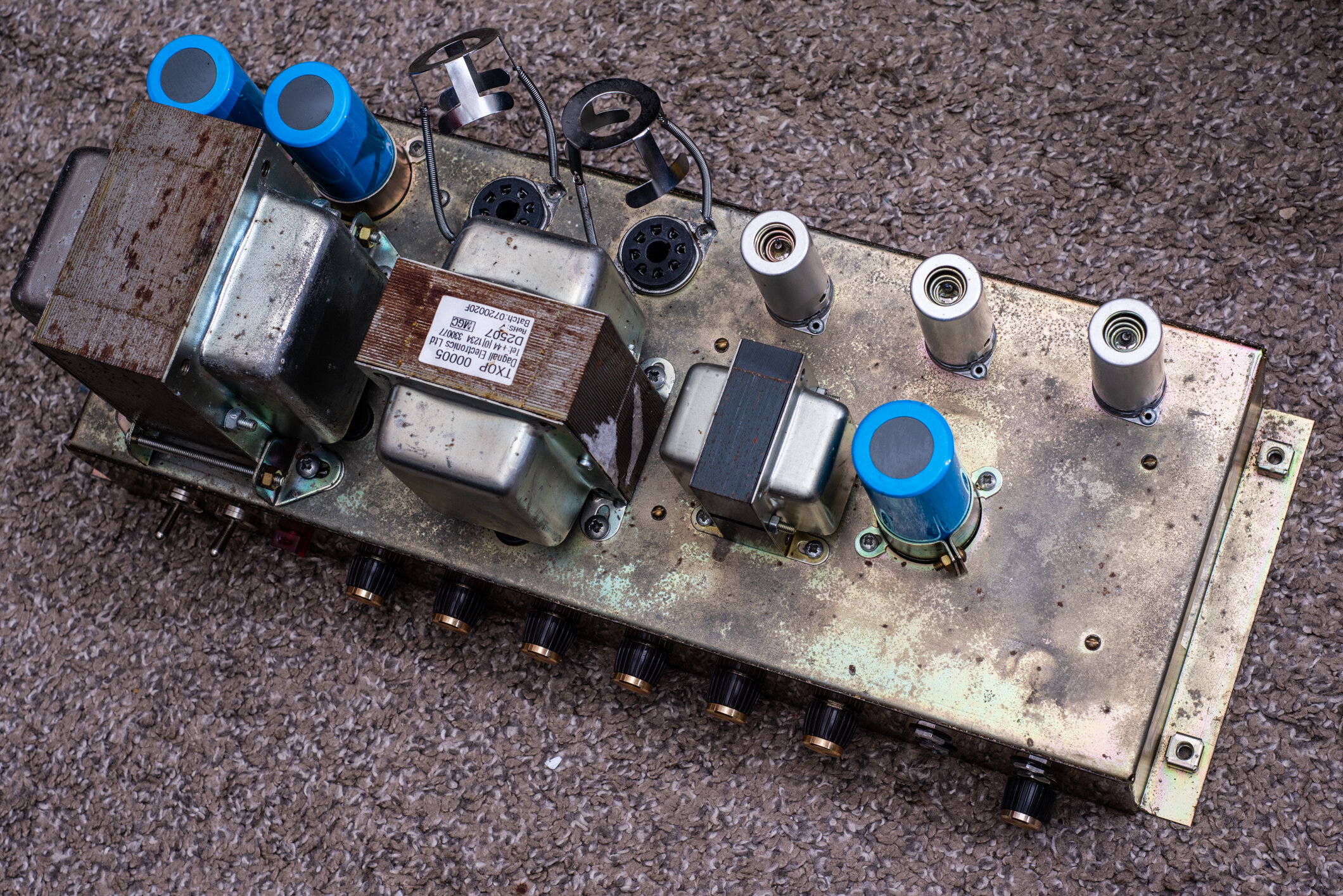Do I have too many Marshalls? The answer really is - there’s no such thing. I’ve been hunting a plexi style amp for a long time now and finally found my fit.
This 1987x is the 50w model, and came equipped with a master volume control replacing the low input on the normal channel. This simple crosswire design resulted in a lot of distortion at lower settings and really wasn’t all that usable - and this is one heck of a loud amp.
This was a great opportunity for me to learn the plexi circuit and try my hand at some light modifications. Since this one is equipped with a factory effects loop, and using a volume box in the loop sounded great to me, I thought I would just wire in a volume control directly to the loop instead of the various popular options online that are designed more for plexi amps without effects loops. Sure, a post phase inverter volume might work a bit better, but I’m sure it’s close and this was so much simpler. Additionally, I took out the original pot and used a push-pull pot I had as a spare, and set this up so pulling out on the master volume pot would engage the “one wire” mod, which essentially just cascades the gain from one channel into another.
Some quick background - plexi type circuits are very unique in that there are two channels running in parallel to each other, sharing the input gain stage but each with separate 2nd gain stages before hitting the phase inverter and output tubes. Linking these channels together by “jumpering” results in more overdrive and you can dial in the amount of either channel (both voiced very differently) and is the classic Marshall plexi tone. The JMP series introduced the 2203 and 2204 models, probably the most popular Marshall circuit designs, which are similar to the plexi circuits but with using a cascaded gain stage and two inputs - the low input simply skipping one gain stage.
So putting the master volume in the effects loop circuit retains the ability to jumper the amp, plug into the “high treble” input, and play away like it’s a classic plexi, just without the glorious power tube distortion until you get the volume way up. Then, pull out on the master and plug into the “normal” channel input, and you have an over the top, but not all that well shaped, high gain tone. It’s certainly no modern metal machine, and the voicing leaves much to be desired, but it has a certain charm as kind of a relic of early plexi modes and can likely be heard on some recordings in the early 70s since this was a popular mod even back then. Pop the master back in and the normal channel makes for an amazing clean channel and pedal platform.
Not bad for a couple of wires and one push pull pot!



